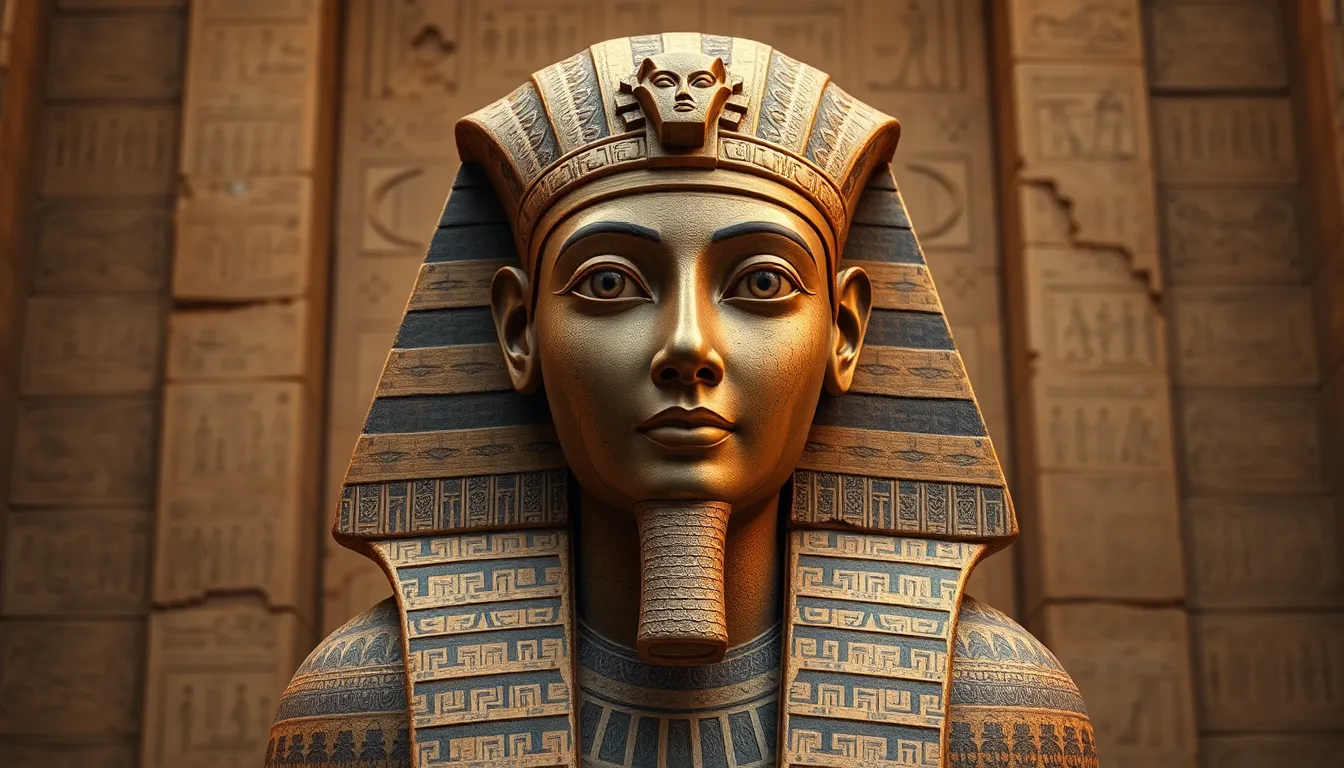The Myths of Pharaoh Hatshepsut’s Legacy
I. Introduction
Pharaoh Hatshepsut, one of the most remarkable figures in ancient Egyptian history, reigned during the 18th Dynasty, around 1479-1458 BCE. Her significance extends beyond her role as a female ruler in a predominantly patriarchal society; she was a skilled diplomat, a visionary builder, and a shrewd political strategist. Despite her accomplishments, Hatshepsut’s legacy has been shrouded in myths and misconceptions that have persisted for centuries.
This article aims to explore and debunk common myths surrounding Hatshepsut’s legacy, shedding light on her true impact on ancient Egypt and the historical context of her reign.
II. The Historical Context of Hatshepsut’s Rule
A. Brief Biography and Ascent to Power
Hatshepsut was born around 1507 BCE, the daughter of Thutmose I and Ahmose. After the death of her husband and half-brother, Thutmose II, she initially served as regent for her stepson Thutmose III, who was still a child. However, Hatshepsut took the unprecedented step of declaring herself Pharaoh, donning male regalia, and adopting the full titles of a king.
B. The Political and Cultural Landscape of Ancient Egypt During Her Reign
Hatshepsut ruled during a time of relative peace and prosperity. Her reign was marked by extensive trade expeditions, monumental building projects, and artistic flourishing. The political landscape was characterized by a strong central authority, and her policies laid the groundwork for the stability and wealth that would characterize the later years of the 18th Dynasty.
III. Myth 1: Hatshepsut Was Only a Regent, Not a Pharaoh
A. Explanation of Her Official Titles and Roles
One of the most persistent myths is that Hatshepsut was merely a regent and never held the title of Pharaoh. In reality, she assumed the full title of Pharaoh, including “Maatkare,” which translates to “Truth is the Soul of Ra.” She ruled with the same authority and responsibilities as her male counterparts.
B. Evidence Supporting Her Full Reign as a Legitimate Pharaoh
- Hatshepsut commissioned numerous monuments and temples, including the magnificent temple at Deir el-Bahari.
- She was depicted in royal iconography, wearing the traditional pharaonic regalia, including the false beard.
- Historical records, such as inscriptions and reliefs, confirm her role as a ruling Pharaoh.
IV. Myth 2: Hatshepsut’s Success Was Solely Due to Male Influence
A. Analysis of Her Political Acumen and Strategies
Another common misconception is that Hatshepsut’s successes were the result of support from male advisors or family members. While she did navigate a male-dominated political landscape, her rise to power was marked by strategic acumen and decisive actions.
B. Discussion of Her Accomplishments Independent of Male Counterparts
- She established trade networks that brought wealth to Egypt, notably the expedition to Punt.
- Her building projects, such as the temple at Deir el-Bahari, showcased her vision and commitment to her legacy.
- Hatshepsut effectively managed the complexities of governance, including diplomatic relations and military endeavors.
V. Myth 3: Hatshepsut Was Unpopular and Overthrown
A. Examination of Archaeological Evidence and Historical Records
Contrary to the belief that Hatshepsut was unpopular and eventually overthrown, archaeological evidence suggests that her reign was stable and well-regarded. Inscriptions and artifacts from her time depict her as a powerful and respected ruler.
B. The Reality of Her Popularity and the Stability of Her Rule
- Hatshepsut’s reign saw an increase in trade, which contributed to the prosperity of the nation.
- Her building projects were celebrated and became symbols of Egypt’s power and culture.
- Historical records indicate that she was honored in the years following her death, contradicting the idea of her unpopularity.
VI. Myth 4: Hatshepsut’s Achievements Were Erased by Her Successors
A. Overview of the Efforts to Diminish Her Legacy After Her Death
After Hatshepsut’s death, her stepson Thutmose III sought to erase her memory, likely due to political motivations. He ordered the defacement of her statues and the removal of her name from monuments.
B. The Lasting Impact of Her Contributions Despite Attempts at Erasure
Despite these efforts, Hatshepsut’s legacy endured through her monumental constructions and the prosperity she brought to Egypt. Her achievements are now recognized as foundational to the stability and success of the 18th Dynasty.
VII. The Modern Reinterpretation of Hatshepsut’s Legacy
A. How Contemporary Scholars View Her Reign Today
Modern scholarship has reevaluated Hatshepsut’s reign, acknowledging her as one of Egypt’s most effective rulers. Historians and archaeologists continue to uncover evidence that reinforces her status as a legitimate and powerful Pharaoh.
B. The Significance of Reexamining Her Story in Modern Feminist Discourse
Hatshepsut’s story has become a focal point in discussions about female leadership and representation. Her ability to navigate a male-dominated society and her accomplishments serve as an inspiration for contemporary feminist discourse, emphasizing the importance of recognizing women’s contributions throughout history.
VIII. Conclusion
In conclusion, the myths surrounding Pharaoh Hatshepsut’s legacy often overshadow the truth of her reign. By examining these myths, we uncover the remarkable reality of her contributions to ancient Egypt and her rightful place in history. Recognizing Hatshepsut as a legitimate Pharaoh and a powerful leader is essential not only for understanding ancient Egyptian history but also for celebrating the achievements of women throughout time.




